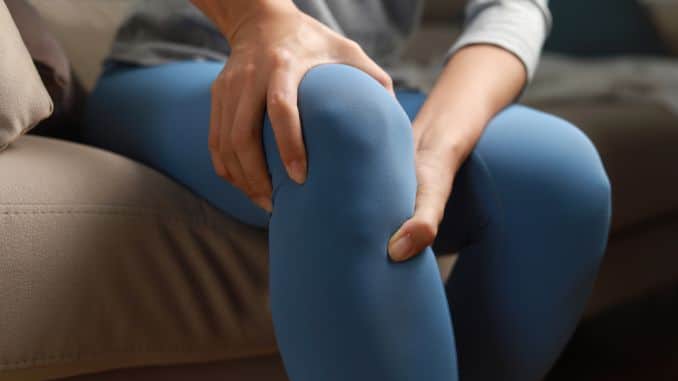
An individual who suffers from this condition may also feel unsteadiness and have balance problems that lead to fear of falling. Sometimes, the tremors can become severe and affect one’s quality’s way of life. The exact cause of this condition is still unknown (idiopathic).
Signs & Symptoms
The primary symptom of orthostatic tremor is the rapid, involuntary, and rhythmic contraction of various muscles simultaneously affecting both legs while standing. This condition is position specific, which means it only happens when one is standing and usually disappears when one walk, sits, or lie down. Symptoms may become severe and one may experience stiffness, weakness, and, in some cases, pain in the legs.
Diagnosis
Diagnosing this condition needs a thorough clinical examination and can be supported by an imaging test such as Surface Electromyography.
What is Surface Electromyography?
It is a non-invasive imaging test that measures the electrical activity of a muscle group at rest (static) or during motion/activity (dynamic). It uses a single or many electrodes that will be placed on the skin surface of the particular muscle to be examined. The electrical activity of the muscle group will be analyzed by a computer according to the frequency spectrum, amplitude, or root mean square of the electrical action potential.
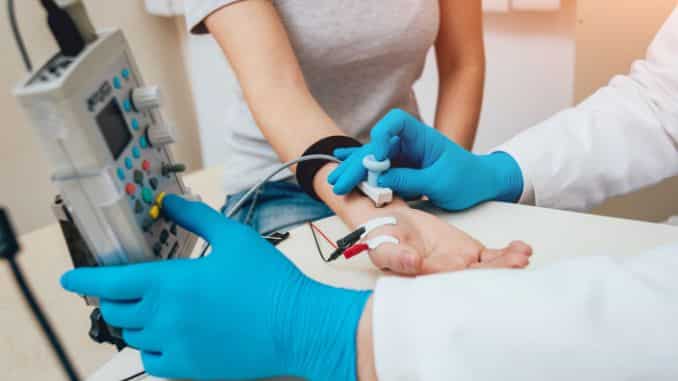
Treatment
Different medications are given to help in relieving symptoms of orthostatic tremors. The most common medication and considered the first-line drug treatment is clonazepam (Klonopin). It basically relieves tremors associated with this. This drug should be taken with precaution because it has side effects such as drowsiness and fatigue, sleep disturbances, constipation or diarrhea, and more. However, not everyone will respond to this drug treatment.
Another medication that could be used is gabapentin (Neurontin). Side effects could include sedation but are usually rare. Other medications include primidone (Mysoline), chlordiazepoxide (Librium), pregabalin (Lyrica), pramipexole (Mirapex), phenobarbital, and valproic acid (Depakote). Levodopa or pramipexole, drugs used to treat Parkinson’s disease, could also be used to treat this.
Exercises
As someone who suffers from this condition, some physical activity involving the legs may be a big challenge for them. However, low-impact exercises can be done to help with this. Here are some of the things you may try and their benefits:
A. Hydrotherapy
Uses water as a medium of treatment. People can use the swimming pool while doing exercises.
-
- Because of the water’s buoyancy, it aids in supporting weak muscles and helps in reducing pain while moving the legs.
- The water’s resistance may also help in muscle strengthening.
B. Tai Chi
A low-impact orthostatic tremor exercise combined with slow and focused movements and deep breathing.
-
- Improves flexibility, balance, and agility.
- Improves aerobic capacity
- Improves muscle strength
Meanwhile, strengthening your legs may also help in reducing the risk of falls associated with Orthostatic tremors. Here are some simple exercises to help strengthen your legs:
1. Ankle Circles
This orthostatic tremor exercise improves your ankle flexibility and ability to move your ankle upward and downward. This is a great warm-up exercise for the lower leg and feet.
-
- Sit in a chair with feet flat on the floor
- Extend your right knee and move your foot in a circle 20 times
- Then move in the other direction 20 times
- Repeat with the other ankle

2. Hip Marching
This exercise will strengthen your hip flexor and thighs. With correct seated posture it will also help your abdominal muscles.
-
- Sit in a chair with feet flat on the floor
- Lift up your right knee as high as comfortable.
- Lower your leg.
- Alternate lifting your knees for a total of 10 lifts on each leg.
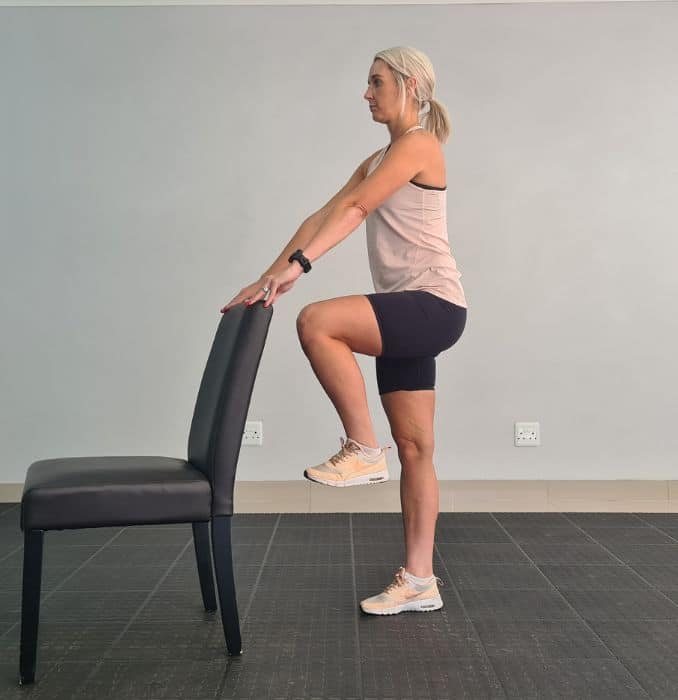
3. Knee Extension
Strengthening your knees with knee-strengthening exercises will improve your ability to stand and balance. This orthostatic tremor exercise will improve your available knee range of motion.
-
- Straighten out your right knee and hold for a few seconds.
- Then straighten out your left knee and hold for a few seconds.
- Repeat 10 times on each leg.
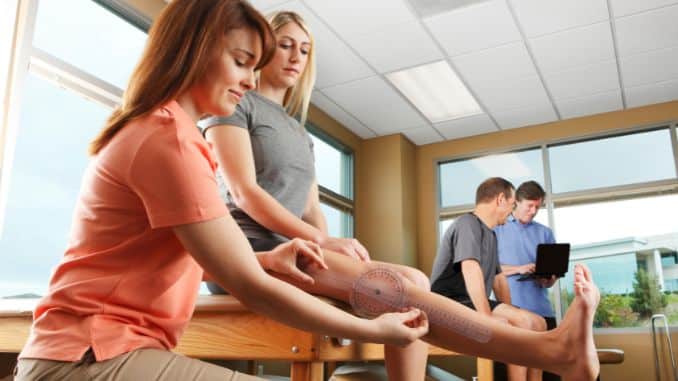
4. Calf Raises
Strengthening your calf muscles with calf exercises will give you more power to step forward on level surfaces or carry you up hills on uneven terrain. Helps pump blood up from your legs to your upper body and brain.
-
- Stand using a chair to balance yourself.
- Raise up on your toes as high as you comfortably can.
- Return to the starting position and repeat 10 times.
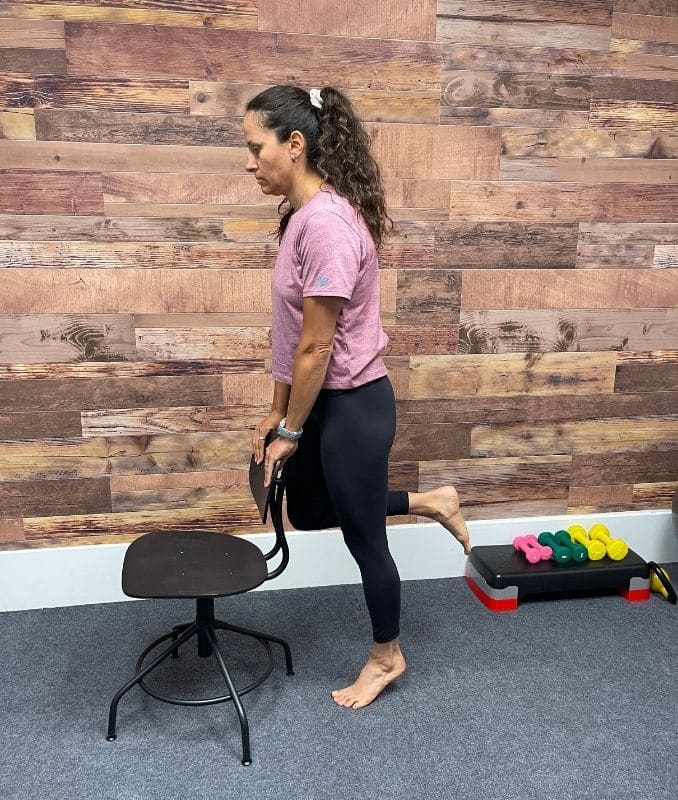
5. Standing Knee Flexion
This knee orthostatic tremor exercise strengthens your hamstring muscles. Also helps with your standing balance.
-
- Stand using a chair to balance yourself.
- Bend your right knee backward as high as you can.
- Return to the starting position and repeat 10 times.
- Continue with the left leg.
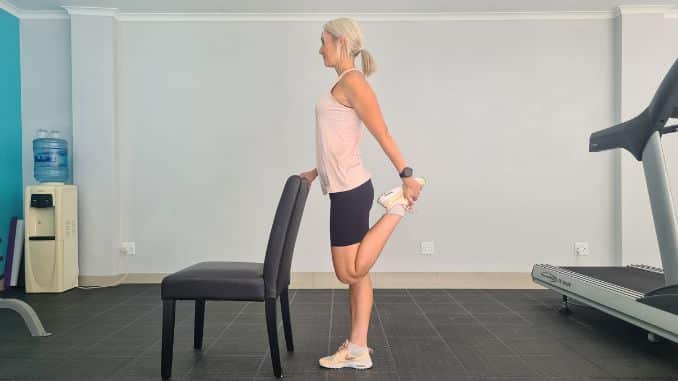
6. Side Hip Raise
Safely strengthens your side hip muscles to help with hip arthritis. Helps maintain your lower body endurance to better walk and sidestep around objects.
-
- Stand using a chair to balance yourself.
- Lift your right leg to the side as high as comfortable.
- Return to the starting position, then repeat 10 times.
- Continue with the left leg.

7. Sit to Stand
Excellent hip exercises to maintain your leg and hip strength. One of the most important exercises used daily is to keep your independence and confidence.
-
- Begin by standing with a chair behind you, your knees just in front of the seat.
- Lean forward as you bend your knees and lower yourself towards the chair as if attempting to sit.
- Before you touch the chair, pause, then stand back up to a full upright position.
- Repeat 10 times.
Takeaway
Orthostatic tremor is not a progressive disorder. Once the symptoms are on a full scale, it remains as is and doesn’t progress to a more severe neurological medical condition. However, if not treated, symptoms don’t improve over time either. Understanding and knowing more information about it could help you determine whether you should consult a doctor. Early diagnosis of this condition could result in a good prognosis.

